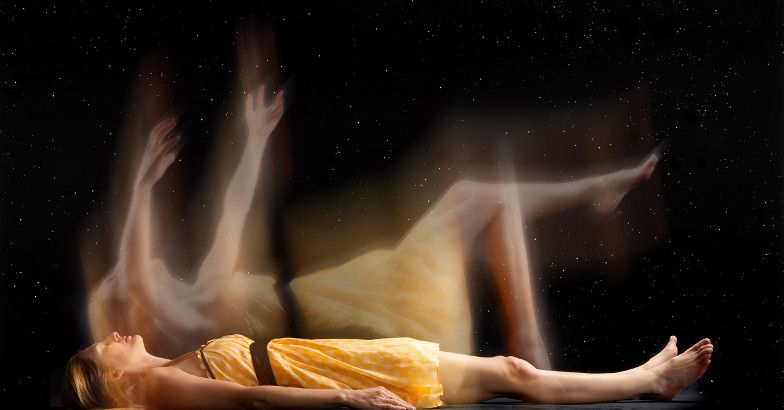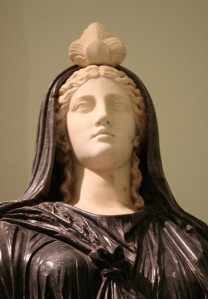In this strange stay-home-and-stay-isolated world right now, many people are reporting changes in their dreaming patterns. More dreams, odd dreams, dreams that are not like their normal dreaming life. Are you dreaming more, dreaming weird? I know I am.
Our Lady is a Goddess of Dreams. People slept in Her temples, hoping for dreams of healing or divination. Interestingly, the most common Egyptian term for dream was rsw.t, from a root meaning “to awaken.” So in dream, we awaken in our sleep…
Does Isis communicate with you in your dreams?
In Egypt, as in most of the ancient world, people definitely paid attention to their dreams. Kings and commoners alike regularly acted on messages received in dream. Sometimes the dreams were clear, the message needing no interpretation. Or a dream might be prophetic, providing information or warnings about the future. Some dreams instructed the dreamer to carry out certain actions; the temples were full of dedicatory plaques to the Deities stating that some action was taken “in accordance with a dream.” Yet these types of dreams were rare—as they are today. Most often, people dreamed in symbols and images that had to be interpreted in order to understand the meaning. For this, one needed a dream interpreter.

(The artwork above was inspired by a dream the artist had of the Temple of Isis in Pompeii. See what her dream was and more of her work here.)
The dream interpreter might be a village wise woman like the one of whom we have evidence from Deir el-Medina. Dream interpreters would set up shop outside the temples—especially during festival days. But most often the dream interpreter would have been one of the priests or priestesses of the Houses of Life at the great temples. Dream Books cataloged dream symbols and their meanings and may have served as resources for the temple interpreters. We have several surviving examples of these dream books.
In addition to bringing one’s dream to the temples for interpretation, one might also seek a special dream by sleeping in the temple. This sacred sleep is known to scholars using the Latin term incubatio (Greek enkoimesis) and was particularly associated with healing temples and healing Deities, such as Isis, Hathor, and Asclepius. It was a frequent practice in temples of Isis. In fact, the temples of Isis at Memphis and Canopus were quite famous for incubation. The Goddess was known to provide accurate diagnoses and effective prescriptions to those who appealed to Her. Diodorus Siculus records that She
gives assistance in their sleep to those seeking it, visibly revealing her very own presence and her beneficence towards those in need. As proof of these claims they say that they themselves offer not myths akin to those of the Greeks, but visible results: for nearly all of the inhabited world serves as witness for them, seeking to add to her honors because of her manifestation through healings. For appearing in their sleep she gives aid to the sick against their diseases, and those who heed her regain their health contrary to all expectation.
An example of an Isis incubation dream survives from a Greek orator named Aristides. Aristides spent a great deal of time visiting healing shrines due to his chronic illness. (Some have even called him a hypochondriac.) In one of his books, he describes a number of synchronicities surrounding a sacrifice of geese to Isis that was surely part of his pre-incubation rite. Then he gives a hint about his dream, writing that a light came from Isis relating to his salvation.
Another interesting example of incubation in an Isis temple comes from a letter written from Aspasia (470-410 BCE), the hetaira who was so beloved by the Athenian statesman Pericles, to Pericles telling him of her journey to several temples of healing to seek relief for (perhaps) a skin irritation of some kind. On the advice of her physician, she first visited the temple of Isis in Memphis. She writes, “I beheld the statue of Isis and her son Orus, seated on a throne supported by two lions” and says that sebestus (a species of Egyptian date) grew about Her shrine and describes the burning of incense in the morning, myrrh during the day, and cyplis [kyphi?] in the evening.”
Aspasia slept in the temple, but says she found no relief. The problem, according to the temple attendants, was Aspasia’s “incredulity.”
Next she went to the temple of Hygieia at Patras where the Goddess “appeared to me in the form of a mysterious pentagon.” Finally it was Aphrodite Who, in in the form of a dove, cured Aspasia.
I include this interesting anecdote for several reasons: first, to demonstrate that then, as now, the hoped for dream communication may not always come to us; second, that “mysterious pentagon” form in which Hygieia appeared to Aspasia. It is likely that the “mysterious pentagon” was the Pythagorean pentagram associated with Hygieia and used as a symbol of recognition among the Pythagoreans. As an educated woman, Aspasia conversed with philosophers, was a philosopher herself, even being described as “a female Socrates” by one ancient writer. And finally, Who better than Aphrodite to heal a hetaira? For me, Aspasia’s experiences ring true and reflect some of the many and varied ways the Deities can interact—or not—with us.
Isis is also known to call to Her initiates and devotees in dream. In Apuleius’ tale that culminates with his protagonist’s initiation into the Mysteries of Isis, we learn that Lucius must remain in the temple of the Goddess—waiting patiently—until he receives a summons from Isis Herself. Only then, when he knew for certain that Isis had invited him, could he undergo the ceremony of his initiation and further cultivate his relationship with the Goddess.
Dream invitation is part of modern devotion to Isis as well. Many are the modern priestesses and priests of Isis who were called to Her service in dream or in vision, which we may think of as a waking dream.
Yet, as always, there are cautions that go along with all this dreaming and visioning. We cannot forget that any information that comes from Her comes through us. The dream or vision-seed of information may come from Isis, but it passes through our human minds and souls, as well as our physical brains and bodies. It’s easy for that seed to be affected by what’s going on with us, in our daily lives and in our spiritual lives. There’s no way to avoid this. The best we can do is to try to develop wisdom and self-knowledge so that we don’t fool ourselves into thinking Isis told us something when we were really just hearing our internal echo chamber. Yet, as long as we can recognize it as our own stuff, this too can be a valuable learning experience.
If we can be honest with ourselves, then when we do have an important dream or vision, we will more easily be able to recognize it. The dream or vision will be more vivid—in our minds, hearts, and memories. We will have a sense of its importance and, at least for us, truth. (Never, ever rely on memory alone; write it down, please. I speak from experience.)
Once Isis has made Herself known to us in our dreams or visions, then it is up to us to take Her up on Her invitation or take up any tasks She may have given us.








